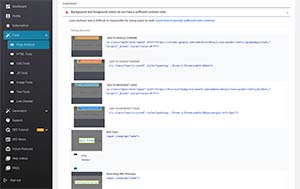Technical SEO Spidering and Web Crawling Essentials
Optimizing a website to improve its search engine visibility and user experience

Enhancing Crawlability and Optimizing Website Structure
Technical SEO is a critical aspect of search engine optimization that often gets overlooked in favor of more glamorous SEO strategies like content creation and link building. However, mastering technical SEO is essential for ensuring that search engines can crawl, index, and rank your website effectively. In this comprehensive guide, we'll delve deep into the world of technical SEO, covering various strategies, tips, and best practices that will help you optimize your website for search engines.One of the fundamental aspects of technical SEO is website structure. Your website's structure plays a vital role in how search engines understand and categorize your content. A well-organized website with a logical hierarchy makes it easier for search engine bots to navigate and index your pages. Additionally, a clean and user-friendly website structure improves the overall user experience.
Page speed is another critical factor in technical SEO. Slow-loading pages can lead to a high bounce rate and negatively impact your search engine rankings. Therefore, it's crucial to optimize your website's performance by compressing images, using efficient code, and leveraging browser caching.
Crawlability is the foundation of technical SEO. Search engine bots need to access and crawl your website's pages to index them. You can enhance crawlability by creating an XML sitemap, which provides a roadmap for search engines to follow. Additionally, you should use a robots.txt file to control which parts of your website should and shouldn't be crawled.
Schema markup is an advanced technical SEO technique that can provide rich snippets in search results. By implementing schema markup, you can make your content more appealing to users and potentially increase click-through rates. This structured data helps search engines understand the context and meaning of your content, improving your chances of ranking higher in search results.
Canonicalization is a concept in technical SEO that deals with duplicate content issues. When you have multiple URLs with similar content, search engines may get confused about which page to rank. Implementing canonical tags helps you specify the preferred version of a page, ensuring that search engines understand which URL to index and rank.
Image optimization is often overlooked but can have a significant impact on SEO. Optimizing images by compressing them and adding descriptive alt text not only improves page speed but also makes your content more accessible to users with disabilities. Alt tags, as shown in the examples above, provide textual descriptions of images, which search engines can use to index your visual content accurately.
Technical SEO is a foundational element of any successful SEO strategy. By paying attention to website structure, page speed, crawlability, schema markup, canonicalization, and image optimization, you can create a solid technical SEO foundation that will improve your website's search engine rankings and user experience. Don't neglect these essential aspects of SEO if you want to succeed in the competitive online landscape.
Website Structure Optimization:
- Logical site architecture and hierarchy.
- Clear navigation for both users and search engines.
- XML sitemap creation for better indexing.
Page Speed Optimization:
- Minimizing page load times for improved user experience.
- Compressing images and files.
- Leveraging browser caching and content delivery networks (CDNs).
Crawlability and Indexability:
- Robots.txt to control bot access.
- Proper handling of 404 error pages.
- Canonical tags to avoid duplicate content issues.
Schema Markup Implementation:
- Structured data to enhance rich snippets in SERPs.
- Improved visibility and click-through rates.
- Markup for specific content types (e.g., events, products, reviews).
Mobile Optimization:
- Responsive web design for mobile-friendliness.
- AMP (Accelerated Mobile Pages) for faster mobile loading.
- Mobile usability and accessibility.
HTTPS and Security:
- SSL certificate for secure data transfer.
- HTTPS as a ranking signal.
- Regular security audits and monitoring.
- Image Optimization:
- Compressing images for faster loading.
- Descriptive alt tags for accessibility and SEO.
- Proper image file naming and formatting.
Canonicalization:
- Managing duplicate content with canonical tags.
- Specifying preferred URLs for indexing.
- Avoiding content dilution and ranking issues.
Technical SEO Audits:
- Regular site audits to identify and fix issues.
- Tools like Google Search Console and SpiderNow.
- Monitoring for crawl errors and indexing problems.
- These bullet points cover some of the essential components and practices involved in technical SEO to ensure a website is optimized for search engines and provides an excellent user experience.
The above information is a brief explanation of this technique. To learn more about how we can help your company improve its rankings in the SERPs, contact our team below.

Bryan Williamson
Web Developer & Digital Marketer

Web Developer & Digital Marketer
Digital Marketer and Web Developer focusing on Technical SEO and Website Audits. I spent the past 26 years of my life improving my skillset primarily in Organic SEO and enjoy coming up with new innovative ideas for the industry.













